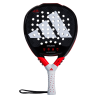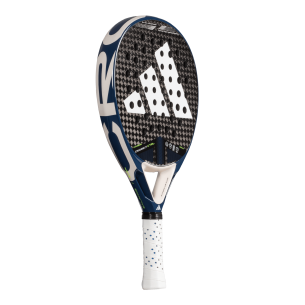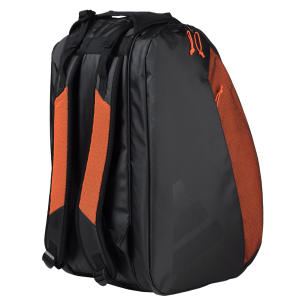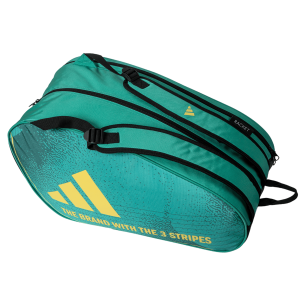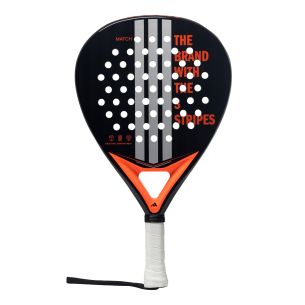
What materials are used to make padel rackets?
The material used in a padel racket is key to understand what characteristics it will have while being used during a match. Each component has its special features and contributes to what the racket is like as a whole. The first distinction that must be made clear is that rackets usually combine two main materials, some inside and others on the surface. In this article, we review the most common components that we find in padel rackets.
EVA rubber
It is a component that is used within the interior of the racket. Its name is formed by the acronym, Ethylene Vinyl Acetate (etilvinilacetate). It is a very durable material - something that guarantees a better finish on the racket. It also provides a great capacity for control in shots and also offers the player the stability and comfort to make more powerful shots.
All adidas rackets are made with this material. In fact, All For Padel has three different types of EVA rubber that can be identified with a different color on the grip cap. Each of them provides slightly different aspects when it comes to performance::
- High Memory EVA: this is the rubber with the greatest memory. In other words, it has the best ability to recover its original position more quickly after an impact. It is a very dense rubber that facilitates powerful hitting and is designed for high-level players. Rackets with High Memory EVA are marked with a red cap.
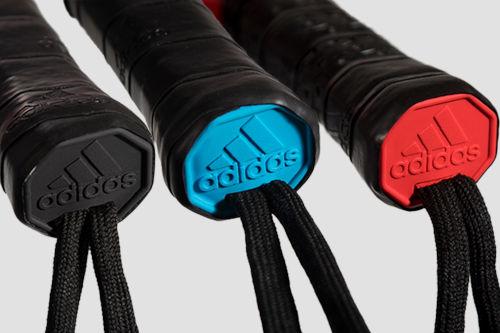
- EVA Soft Energy: it is a slightly lower density rubber. Without losing power, this type of rubber provides the player with more options for shot control. A blue cap is the color that distinguishes it.
- EVA Soft Performance: it is the lowest density padel racket and the one that guarantees greater comfort while playing. That is why it is ideal for intermediate or beginner players. The black cap identifies the rackets that contain EVA Soft Performance rubber.
Carbon Fiber
In the outer layers of the racket the most used materials are fibers. Of all of them, carbon fiber is the lightest and strongest. To these two key aspects, we must add a great hardness and rigidity, a fact that makes this material ideal for manufacturing the best power rackets. It is a guarantee of quality.
Adidas rackets are made with 6 types of fibers and 4 of them are carbon. The stiffest and, therefore, the generator of the most power is the Carbon Aluminized 2 to 1. And it is followed, from least flexibility to most, the Carbon Aluminized 24k, the Carbon Aluminized 15k and the Carbon 6k.

Fiberglass
This compound, as also happens with carbon fiber, is formed by the intertwining of small filaments. In this case, glass. In terms of characteristics, it is a softer and more flexible material, which makes it easier for the ball to react quicker after a shot is played. It is a heavier material than carbon fiber but also cheaper and that makes it a good option for rackets in the lower price ranges. That does not mean that we are talking about a very complete material. Fiberglass is also used in many mid-high range rackets.
Organic flax fiber
 Adidas works with a third fiber, a 100% recyclable compound that is used in the Greenpadel range of rackets. We are talking about flax fiber, a natural, compostable and biodegradable material. Beyond its ecological advantages, it has many other positive aspects, including strength and lightness.
Adidas works with a third fiber, a 100% recyclable compound that is used in the Greenpadel range of rackets. We are talking about flax fiber, a natural, compostable and biodegradable material. Beyond its ecological advantages, it has many other positive aspects, including strength and lightness.
Additional Materials
Although rubbers and fibers are the recurring compounds in the manufacture of padel rackets, there are other materials that are also used. This is the case of graphite, aluminum, titanium, or Kevlar, among others. Their different properties make them useful in functions such as reinforcing the frame of the racket or stiffening lower layers of the racket face. The combinations are many and diverse and technology never stops bringing us innovations to improve the performance of our rackets and equipment year after year.


